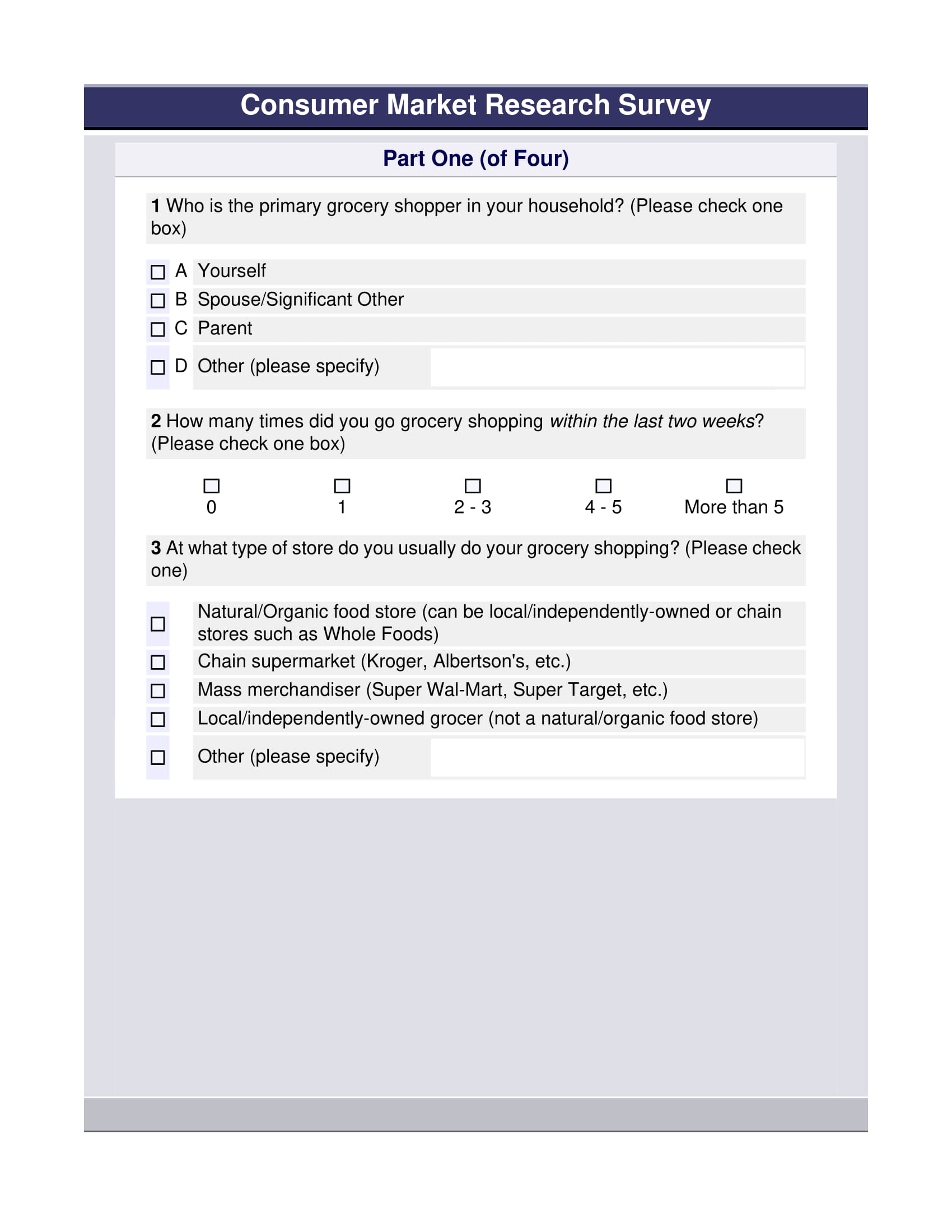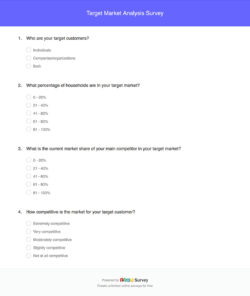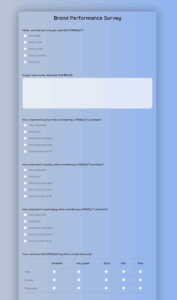Embarking on primary market research can feel like setting sail on an uncharted ocean. You know you need to gather fresh, firsthand data directly from your target audience, but where do you even begin? The thought of crafting the perfect set of questions, ensuring they’re unbiased, and cover all the necessary ground can be daunting. It’s a crucial step for any business looking to understand their customers, validate an idea, or even pivot their strategy, yet many feel lost before they even start.

That’s where a well-designed primary market research survey template truly shines. It provides a foundational structure, a guiding light that helps you navigate the complexities of data collection. Instead of staring at a blank page, you’re presented with a framework that prompts you to consider all the angles, ensuring you don’t miss vital information. It streamlines the process, saves you invaluable time, and ultimately leads to more actionable insights that can drive your business forward.
Crafting Your Perfect Primary Market Research Survey
Before you even think about specific questions, the absolute first step in developing your primary market research survey is to clearly define your objectives. What specific problems are you trying to solve? What decisions are you hoping to inform with this data? Are you trying to understand customer pain points, assess demand for a new product feature, or gauge brand perception? Being crystal clear on your goals will dictate every question you include and every piece of data you prioritize.
Once your objectives are locked in, you can start thinking about the types of questions that will help you achieve them. A good primary market research survey template will typically blend different question formats. You’ll want closed-ended questions, like multiple-choice or rating scales, for quantitative data that’s easy to analyze and compare. But don’t shy away from open-ended questions! These provide rich, qualitative insights, allowing respondents to express their thoughts in their own words, which can uncover unexpected perspectives and deeper understanding.
Essential Sections of Any Primary Market Research Survey Template
To ensure comprehensive coverage, a robust survey should typically include several key sections, guiding your respondents through a logical flow and gathering diverse information:
- Introduction and Consent: Briefly explain the survey’s purpose, assure anonymity (if applicable), and obtain consent.
- Demographics: Collect basic information about your respondents (age, location, income, profession) to segment your data later.
- Product or Service Usage: Understand how respondents currently use similar products or services, their frequency, and satisfaction levels.
- Needs and Pain Points: Dive deep into their challenges, frustrations, and what solutions they are seeking.
- Competitive Landscape: Ascertain which competitors they are using or are aware of, and why they choose them.
- Pricing Sensitivity: Gauge their willingness to pay for certain features or services.
- Future Interests and Suggestions: Ask about features they’d like to see or general feedback for improvement.
Remember, the flow should feel natural and intuitive. Avoid leading questions that push respondents towards a certain answer, and try to keep the survey as concise as possible to maintain engagement. Always pre-test your survey with a small group before launching it widely. This helps you catch any confusing questions, technical glitches, or areas where clarity might be lacking, ensuring your data collection is as smooth and effective as possible.
Making the Most of Your Survey Data
So, you’ve deployed your primary market research survey template, gathered a wealth of responses, and now you have all this raw data. What’s next? The real magic happens in the analysis phase. This is where you transform numbers and words into meaningful insights. Start by organizing your data, perhaps in a spreadsheet, looking for patterns and trends. For quantitative data, calculate averages, percentages, and look at correlations. For qualitative data from open-ended questions, categorize common themes and sentiments.
Don’t just look at the surface; dig deeper. If you asked demographic questions, segment your data to see how different groups respond. Do younger audiences have different needs than older ones? Do customers in one region prioritize different features than those in another? These kinds of comparisons can reveal nuances that might otherwise be overlooked, providing a richer understanding of your diverse audience segments.
The goal of this analysis isn’t just to report numbers; it’s to answer the initial objectives you set. Did you want to know if there’s demand for a new product? Your data should clearly indicate whether that demand exists, and for whom. Did you want to identify key pain points? Your analysis should pinpoint the most common frustrations and their severity. Every piece of data should contribute to painting a clearer picture related to your core research questions.
Finally, translate your findings into actionable insights. This is the most critical step. For instance, if your data shows a strong desire for a specific feature, that’s an insight that can directly inform your product development roadmap. If respondents consistently complain about a certain aspect of your service, that points to an immediate area for improvement. The true value of market research lies in its ability to guide strategic decisions, turning raw information into a competitive advantage.
Ultimately, having a solid framework for your primary market research, starting with a well-thought-out survey, is invaluable. It’s the cornerstone of understanding your audience intimately and making data-driven decisions that propel your business forward. This isn’t just about gathering information; it’s about gaining clarity and confidence in your strategic direction.
By investing the time to design and deploy a comprehensive market research survey, you equip yourself with the knowledge needed to innovate, adapt, and succeed in an ever-evolving market. It empowers you to meet customer needs effectively, identify new opportunities, and stay ahead of the curve, ensuring your efforts are always aligned with what your audience truly desires.


